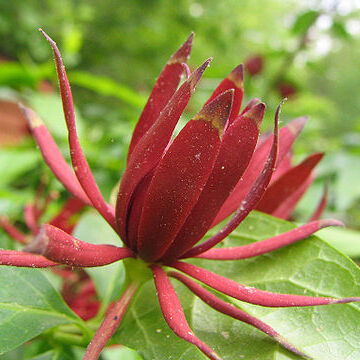Monoecious or andromonoecious trees or (not in Australia) shrubs, with aromatic bark, often deciduous (not in Australia). Leaves opposite, simple, entire; stipules absent. Flowers usually solitary, rarely paired or several together, axillary or terminal (not in Australia), bisexual or lacking functional carpels, with all floral parts inserted in a continuous spiral. Receptacle cup-shaped or urceolate. Perianth of 15–52 tepals, inserted on outer surface of receptacle. Androecium in two series, outer fertile, inner sterile; stamens 5–30, free, laminar and lacking filaments or filaments short, terete (not in Australia), inserted on edge of receptacle; anthers dorsifixed, tetrasporangiate, extrorse, opening by longitudinal slits; staminodes 8–28, inserted on upper inner surface of receptacle. Gynoecium of 1–35 free carpels, inserted on lower inner surface of receptacle; carpel 1-loculed; placentation submarginal; ovules 2 per carpel, one usually aborting. Fruit an achene, enclosed in an enlarged dry (not in Australia) or fleshy receptacle. Cotyledons 2–4, large and fleshy or spirally twisted (not in Australia); endosperm scant or absent.
Shrubs , deciduous, rhizomatous, aromatic. Leaves opposite, without stipules, petiolate. Leaf blade : margins entire or, on fast-growing shoots, occasionally with a few teeth. Inflorescences terminal on short, leafy branches of current growth, solitary flowers. Flowers bisexual. Hypanthium urn-shaped; tepals and stamens perigynous; inner tepals, stamens, and staminodes with succulent, white food bodies at tips. Tepals 15-30, fleshy, petaloid, spirally inserted on outside of hypanthium. Stamens 5-30, spirally inserted at top of hypanthium; staminodes 10-25, on inner surface of hypanthium; locules opening by longitudinal slits. Pistils 5-35, 1-carpellate, spirally inserted within hypanthium; ovules 2 per locule, distal ovule abortive, submarginal; style elongate, filiform; stigma dry, decurrent. Fruits achenes, 1-35, dark reddish brown, cylindric, pubescent, enclosed within enlarged, fibrous persistent hypanthium (pseudocarp). Seeds : endosperm absent.

